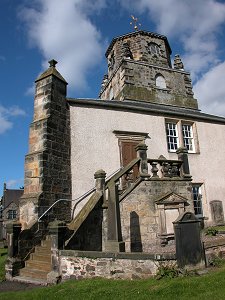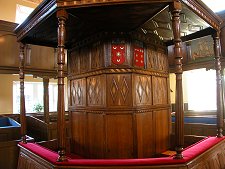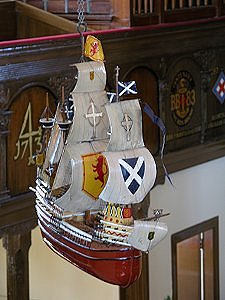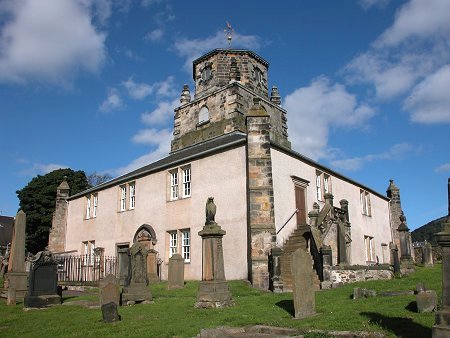 Burntisland Parish Church from the South-East |
Burntisland Parish Church lies to the south of Burntisland's High Street on higher ground overlooking the town's harbour to the south and west, and close to the railway station.
The Parish Church is one of earliest post-Reformation churches built in Scotland that remains in use today. It is square in plan, comprising a square "nave" surrounded by four "aisles". Above each of the aisles is a gallery, giving the church a large capacity for its size. The main structure is supported by four vast stone columns, one at each corner of the nave. The focus of the church lies at its centre and the high pulpit which backs onto the south-west column.
Backing onto and wrapping around the opposite, north-eastern, column is the ornate Magistrate's Pew. This was constructed in 1606 for the local laird, Sir Robert Melville of Rossend, and it carries the coats of arms of Sir Robert and his wife. The pew acquired its current name after the Rossend estates were taken over by the Town Council. It is used just once each year, at the Kirkin' of the Council ceremony each May.
Restoration work in recent years means that the interior of the church is probably in more glorious condition today than at any time in its past. From the highly ornate ceiling to the beautifully preserved woodwork, the crests of the guilds who sat in different parts of the church, and the many reminders that the church has always served a community that has depended on the sea for its livelihood, the interior is superb.
The seafaring reminders range from the depictions of anchors, ships and other nautical emblems through to the suspended model of a ship. This is the Great Michael intended by James IV to be the very last word in warship design of its day, which was constructed in the shipyards of Newhaven near Edinburgh in 1511. The Great Michael met its end in a storm in the River Forth and the survivors sheltered in the predecessor church serving Burntisland. In return they gave a model of the ship to the church. This disappeared during extensive alterations made in 1822, and the present model was gifted to the church in 1962.
Perhaps the most striking reminder of the importance of the sea is the Sailor's Loft, the east gallery. This has a separate entrance leading to external stairs. This allowed sailors whose boats had to catch the tide to leave the church during services without disturbing the rest of the congregation.
Many are attracted to Burntisland Parish Church because of its beauty, the quality of its adornments, and simply because it is such an unusual Scottish church. Others come because of its important role in Church history.
The church is sometimes know by the alternative name of the Kirk of the Bible. This dates back to 12 May 1601, when a meeting of the General Assembly of the Church of Scotland met in Burntisland Parish Church in the presence of King James VI. The General Assembly had moved out of Edinburgh to escape an outbreak of plague and the meeting was due to take place in St Andrews. However, James had injured his shoulder in a hunting accident while staying at nearby Rossend Castle so summoned the Assembly to meet somewhere more convenient for him.
At that meeting it was agreed by all present, including the King, to commission a new translation of the Bible. Two years later James VI of Scotland also became James I of England (see our Historical Timeline). As a result most of the work that led to the publication of the "Authorised Version" or the "King James Bible" in 1611 took place south of the border: but it started right here.
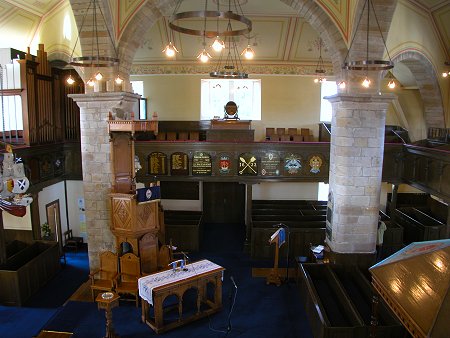 Church Interior from the North Gallery |
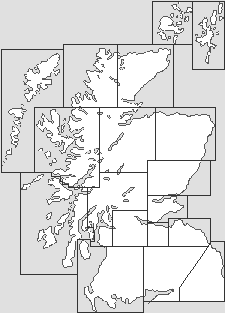
|
|
|
Visitor InformationView Location on MapGrid Ref: NT 224 857 burntislandparishchurch.org What3Words Location: ///ferried.bags.jumbo |
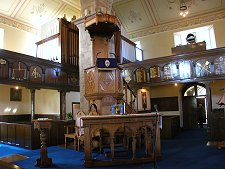 The Pulpit |
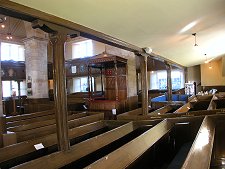 View from the Stalls |
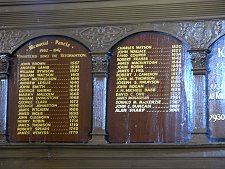 The Roll of Ministers |
 Ornate Ceiling |
